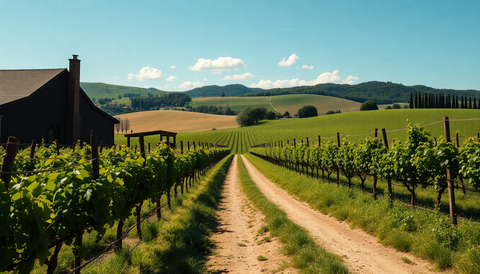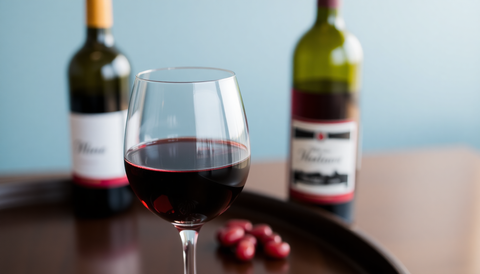Introduction: why tawny matters
Tawny is a versatile word that can refer to a warm brownish colour or to one of the most beloved styles of fortified wine: Tawny Port. For designers, creators and food lovers alike, understanding tawny means knowing a colour palette and a sensory world filled with caramel, nuts and dried fruit. For wine lovers it unlocks a centuries-old tradition of fortification, barrel ageing and careful blending that yields wines ready to enjoy on release.
Quick definition
Tawny (colour): a warm, brownish-orange or golden-brown shade with red or amber undertones. Tawny (wine): a style of Port that has been aged oxidatively in wood, developing an amber or brownish hue and flavours of caramel, toasted nuts and dried fruit.
Tawny colour shades and useful hex codes
If you need precise colour references for web or print projects, here are practical tawny shades with suggested hex values. Use them as starting points and adjust for lighting, screen calibration and print profiles.
- Tawny Classic: #B5651D
- Amber Tawny: #DEB887
- Caramel Tawny: #C77C38
- Deep Rust/Tawny: #8B4513
- Soft Tan/Tawny: #D2B48C
Short history: where the term came from
The word tawny derives from Middle English and Old French roots meaning brownish-yellow, used historically to describe animal hides and fabrics. In wine, the term became associated with a Port style after long barrel ageing transformed the deep ruby colour of young fortified wine into an amber or golden-brown hue. Over centuries, regions producing Port developed naming conventions to describe these oxidative, wood-aged wines as tawnies.
Grape varieties used for Tawny Port
Tawny Port is traditionally made from Portuguese Douro varieties when produced in Portugal, but winemakers across the world use similar grapes or regionally appropriate alternatives. Common varietals include:
- Touriga Nacional, Touriga Franca, Tinta Roriz (Tempranillo), Tinta Barroca and Tinta Amarela – classic Portuguese grapes used in many Ports.
- Shiraz (Syrah), Grenache (Garnacha) and Mataro (Mourvèdre) – frequently used in Australian fortified wines and Tawny-style blends, especially in South Australia.
- Other local red varieties may be included depending on region and house style.
How Tawny Port is made: step-by-step
The production of Tawny Port follows a deliberate sequence where timing and container choice are crucial.
- Harvesting: Grapes are harvested when ripe, often aiming for high sugar levels to ensure sufficient sweetness and body in the finished wine.
- Crushing and fermentation: Grapes are crushed and fermentation begins. For Port, ferment is intentionally halted before all sugars are converted to alcohol.
- Fortification: A neutral grape spirit of high alcohol (commonly near 77% ABV) is added to the fermenting must to stop yeast activity. This preserves natural sugars and yields a fortified wine around 18–20% ABV.
- Aging in wood: Unlike Vintage Port, Tawny is aged in oak casks or large wooden vats. Oxidative exposure in barrel over years causes flavours to evolve and the colour to shift from deep ruby to amber and tawny shades.
- Blending: Winemakers blend multiple casks and vintages to achieve a consistent house style or to create age‑statement tawnies (10, 20, 30, 40 years). Blends are typically composed to reflect an average age rather than a single vintage.
- Bottling: Most tawnies are bottled when ready to drink and do not require further maturation in bottle. Some single-vintage tawnies (colheitas) may be bottled with vintage and cask age information.
Why ageing in wood matters
Ageing in oak allows controlled oxidation and micro-oxygenation through the barrel staves. This process softens tannins, develops complex tertiary aromas (toast, caramel, nuts, dried citrus) and transforms colour. In warm climates, oxidative changes progress faster, which influences the speed at which a tawny acquires its characteristic flavours.
South Australia and Tawny-style fortified wines
South Australia has a strong tradition of fortified winemaking and produces notable tawny-style wines. Distinctive factors include:
- Warm, dry days that increase ripeness and sugar concentration, producing ripe fruit character in the base wines.
- Long-established cooperages and the use of seasoned oak casks that have been part of a house style for generations.
- A history of blending expertise: many Australian producers build signature tawnies by marrying younger and older casks for balance and consistency.
Color and flavour evolution by age
Tawny Port changes noticeably over time. Below are typical colour and flavour milestones you can expect:
- Young tawny (2–5 years): Deep red-brown colour, pronounced dried red and dark fruit, hints of chocolate and spice.
- 10-year tawny: Amber-brown hue, strong caramel and fig notes with gentle nuttiness.
- 20-year tawny: Golden-brown, pronounced toasted nuts, toffee, orange peel and a slightly drier finish.
- 30–40+ year tawnies: Deep amber/golden, multi-layered with walnut, hazelnut, coffee, toffee and lingering savoury complexity.
Styles and labelling: how to read a tawny bottle
Labels can be confusing. Here are common terms and what they mean:
- Reserve: Entry-level tawny, often a blend aged a few years, approachable and versatile.
- Age-statement tawnies (10, 20, 30, 40 years): These indicate the average age of the wines in the blend. Higher numbers usually mean more complexity and price.
- Colheita: A single-vintage tawny aged in cask for a long period and then bottled with the harvest year noted. These show vintage-specific character.
- Vintage Port vs Tawny: Vintage Ports are bottled young and bottle-age; tawnies are aged in wood and bottled ready to drink.
Tasting notes: what to expect on the nose and palate
Common sensory descriptors for Tawny Port include:
- Aromas: caramel, toffee, toasted hazelnuts, walnut, dried fig, orange peel, cinnamon, leather, coffee and molasses.
- Palate: smooth, rounded sweetness balanced by acidity, flavours of butterscotch, brown sugar, roasted nuts, stewed fruit and a long, sometimes slightly drying finish.
- Texture: velvety and rich with a clean, lingering aftertaste in older examples.
How to serve Tawny Port
- Serving temperature: Slightly chilled is best. Aim for 12–16°C (54–61°F) to keep aromatics lively and sweetness balanced.
- Glassware: Small tulip-shaped dessert wine glass or a standard Port glass to concentrate aromas.
- Decanting: Not usually necessary for tawnies unless the bottle contains sediment (rare). Colheitas or very old bottles may benefit from careful decanting.
- Open bottle life: Because tawnies have been oxidatively aged, they remain good for weeks or even months after opening if recorked and refrigerated.
Food pairings: classic and creative matches
Tawny is incredibly food-friendly and versatile across sweet and savoury pairings.
- Cheese: Stilton, Roquefort, aged cheddar, manchego, mature Comte or Brie.
- Nuts and fruit: Toasted almonds, hazelnuts, figs, dates and dried apricots.
- Desserts: Sticky toffee pudding, crème brûlée, pecan pie, dark chocolate torte and caramel flan.
- Savoury: Foie gras, terrines, spiced duck or pork with sweet glazes, and stronger cured meats.
- Cheese board idea: Pair a 20-year tawny with blue cheese and toasted walnuts, finish with dark chocolate squares.
Buying guide: how to choose the right Tawny
- Decide on purpose: everyday drinking (reserve or young tawny) or special occasion (10–40 year age-statement or colheita).
- Budget guidance: entry-level tawnies are very affordable; 10–20 year range offers excellent value; 30–40+ year and single-vintage colheitas can be premium priced.
- Check producer reputation: established producers with consistent blending expertise often deliver the most reliably balanced tawnies.
- Read the label: age statements give a clear expectation of complexity and style. Look for tasting notes or producer descriptions.
Notable producers and regional examples
Traditional producers come from Portugal's Douro Valley, but other regions, notably South Australia, produce excellent fortified wines in tawny style. Examples to explore:
- Portugal: major Port houses with tawny ranges and age-statement bottlings.
- South Australia: McLaren Vale and other producers known for Shiraz, Grenache and Mataro-based fortified wines aged in oak, often showing ripe fruit and oxidative complexity.
- Other regions: Australia, South Africa and parts of Spain and California produce tawny-style fortified wines reflecting local grapes and climate.
Common myths and clarifications
- Myth: Tawny Port is only from Portugal. Clarification: While true for wines labelled Port under protected designation rules, many regions produce tawny-style fortified wines with similar methods and flavour profiles.
- Myth: Tawny Port keeps forever after opening. Clarification: It lasts far longer than many unfortified wines, often weeks to months, but quality will gradually decline over long periods once opened.
- Myth: The age on the label means all the wine is that age. Clarification: Age statements generally indicate an average age of the blend, not that every drop is exactly that old.
Creative uses and cocktails
Tawny Port can be used in cocktails and cuisine beyond sipping:
- Cocktail idea: Tawny Negroni — replace sweet vermouth with Tawny Port for a richer, nuttier profile.
- Culinary use: Add Tawny to deglaze pans for sauces on pork or duck, or reduce with butter and herbs for a glaze.
- Baking: Use Tawny to macerate dried fruits for chutneys, cakes or plum puddings.
Extended FAQ
- Is tawny the same as ruby? No. Ruby Ports are fruity and retain red-purple colour; tawnies are oxidatively aged and develop amber-brown hues with nutty, caramel notes.
- Why do tawnies taste nutty? Long exposure to oxygen and wood leads to Maillard-like oxidative reactions and the development of nutty, caramel and toasty aromatics.
- How should I store unopened bottles? Keep them upright in a cool, dark place away from heat and UV light. Unlike long-age bottle-aged wines, tawnies do not require cellar conditions for maturation after purchase.
- Can I drink Tawny Port as an aperitif? Yes. Lighter tawnies or slightly chilled 10-year examples can work beautifully as an aperitif, especially with salty snacks or olives.
Conclusion: why tawny appeals
Tawny combines visual warmth and sensory depth. Whether you are matching a color palette or selecting a dessert wine, the term spans practical design use and a rich vinous tradition. Tawny Port and tawny-style fortified wines reward curiosity: they offer approachable drinking early, fascinating complexity with age, and a versatility that spans cheese boards, decadent desserts and creative cooking. South Australia and other warm regions have revitalised fortified traditions with bold fruit and skilled barrel ageing, making tawny an accessible and delightful choice for modern drinkers.
Further reading and next steps
- Try a vertical tasting of 10-, 20- and 30-year tawnies to experience colour and flavour evolution.
- Visit a local producer or cellar door in regions known for fortified wines to learn about blending and cask selection.
- Experiment in the kitchen: reduce tawny with honey and herbs as a sauce for duck or roasted pears for dessert.
Armed with this guide, you can spot tawny shades in design, choose the right style of fortified wine for your meal and savour what makes Tawny Port uniquely warm and complex.




Comments (0)
There are no comments for this article. Be the first one to leave a message!